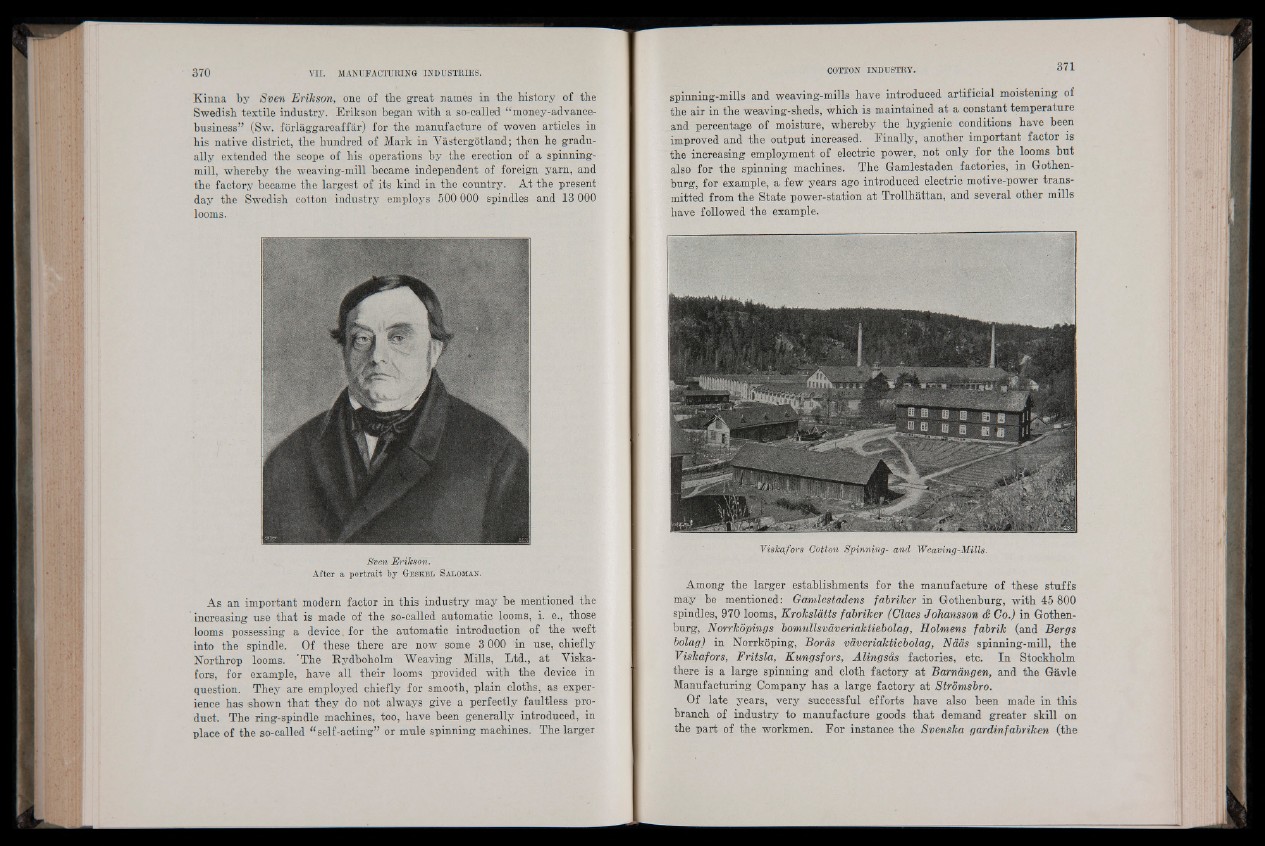
Kinna by Sven Erikson, one of the great names in the history of the
Swedish textile industry. Erikson began with a so-called “money-advance-
business” (Sw. forlaggareaffar) for the manufacture of woven articles in
his native district, the hundred of Mark in Vastergotland; then he gradually
extended the scope of his operations by the erection of a spinning-
mill, whereby the weaving-mill became independent of foreign yarn, and
the factory became the largest of its kind in the country. At the present
day the Swedish cotton industry employs 500 000 spindles and 13 000
looms.
Sven Erikson.
A fte r a p o rtr a it by Geskel Saloman.
As an important modern factor in this industry may be mentioned the
increasing use that is made of the so-called automatic looms, i. e., those
looms possessing a device. for the automatic introduction of the weft
into the spindle. Of these there are now some 3 000 in use, chiefly
Northrop looms. The Rydboholm Weaving Mills, Ltd., at Viska-
fors, for example, have all their looms provided with the device in
question. They are employed chiefly for smooth, plain cloths, as experience
has shown that they do not always give a perfectly faultless product.
The ring-spindle machines, too, have been generally introduced, in
place of the so-called “ self-acting” or mule spinning machines. The larger
spinning-mills and weaving-mills have introduced artificial moistening of
the air in the weaving-sheds, which is maintained at a constant temperature
and percentage of moisture, whereby the hygienic conditions have been
improved and the output increased. -Finally, another important factor is
the increasing employment of electric power, not only for the looms but
also for the spinning machines. The Gamlestaden factories, in Gothenburg,
for example, a few years ago introduced electric motive-power transmitted
from the State power-station at Trollhattan, and several other mills
have followed the example.
Viskafors Cotton Spinning- and Weaving-Mills.
Among the larger establishments for the manufacture of these stuffs
may- be mentioned: Gamlestadens fabriker in Gothenburg, with 45 800
spindles, 970 looms, Krokslâtts fabriker (Claes Johansson & Co.) in Gothenburg,
Norrkôpings bomullsvaveriakliebolag, Holmens fabrik (and Bergs
bolag) in Norrkôping, Borâs vàveriaktiebolag, Naas spinning-mill, the
Viskafors, Fritsla, Kungsfors, Alingsâs factories, etc. In Stockholm
there is a large spinning and cloth factory at Barnângen, and the Gavle
Manufacturing Company has a large factory at Strômsbro.
Of late years, very successful efforts have also been made in this
branch of industry to manufacture goods that demand greater skill on
the part of the workmen. For instance the Svenska gardinfabriken (the